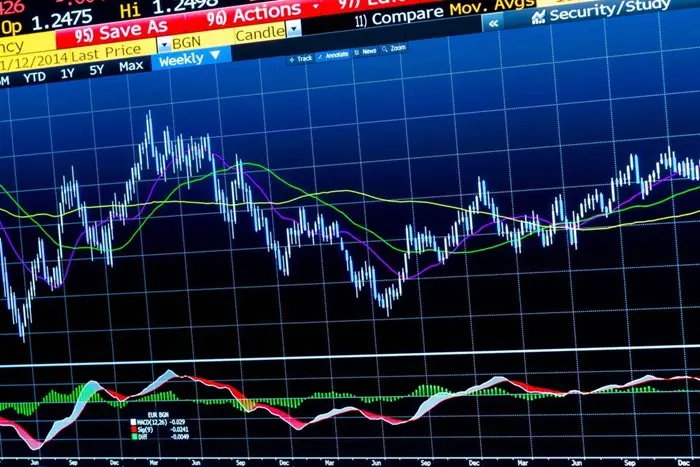Small-cap stocks, which typically have a market capitalization of between $300 million and $2 billion, are often seen as high-growth opportunities. Investors are drawn to them because they may offer significant upside potential compared to their larger counterparts. However, despite these potential benefits, small-cap stocks have often underperformed relative to larger stocks in recent years. In this article, we will explore the reasons behind this underperformance and examine the factors that have contributed to the challenges faced by small-cap stocks.
The Impact of Economic Uncertainty
One of the key reasons small-cap stocks are underperforming is the economic uncertainty that affects them more acutely than larger companies. Smaller companies are often more vulnerable to economic downturns, recessions, and shifts in consumer demand. During times of economic instability, investors tend to favor more stable, blue-chip stocks that have established business models, larger cash reserves, and global operations.
In contrast, small-cap stocks are more reliant on domestic markets, making them more sensitive to domestic economic factors. For example, if interest rates rise or inflation spikes, small companies may face increased borrowing costs or higher input costs, squeezing their profit margins. Larger companies, on the other hand, often have the resources to weather these storms.
Higher Volatility
Another characteristic of small-cap stocks is their inherent volatility. Smaller companies tend to experience larger price swings compared to their larger counterparts. While this volatility can lead to significant gains, it can also result in sharp losses. The unpredictable nature of small-cap stocks can make them less appealing to risk-averse investors, especially during times of market uncertainty.
Large-cap stocks, in comparison, tend to have more stability due to their size and more established market presence. Investors are more likely to stay invested in large-cap stocks during market downturns, whereas small-cap stocks can suffer significant sell-offs, leading to their underperformance.
Limited Access to Capital
Small-cap stocks often face challenges when it comes to raising capital. These companies may have limited access to equity markets and may rely heavily on debt financing, which can be expensive. During periods of rising interest rates, the cost of borrowing increases, which puts additional pressure on small-cap companies that are already operating with smaller margins.
Larger companies, by contrast, typically have easier access to capital due to their established creditworthiness and larger size. They can raise funds through stock offerings or debt issuances with relative ease, allowing them to fund expansion, research and development, and other growth initiatives. Small companies, however, may struggle to finance these types of activities, limiting their growth potential and overall performance.
Limited Market Liquidity
Liquidity is another challenge that small-cap stocks face. Because these stocks are less widely traded than large-cap stocks, they tend to experience lower trading volumes. As a result, it can be harder for investors to buy or sell shares without affecting the price. This lack of liquidity can cause price fluctuations that discourage investors from holding small-cap stocks.
Large-cap stocks, on the other hand, tend to be more liquid due to their widespread popularity and trading volume. This makes it easier for investors to enter or exit positions without causing large price movements, making them more attractive in times of market uncertainty.
The Rise of Passive Investing
In recent years, passive investing has gained significant popularity. Exchange-traded funds (ETFs) and index funds, which track broader market indices, have become the investment vehicles of choice for many investors. These funds tend to allocate a larger portion of their capital to large-cap stocks due to the weighted nature of the indices.
For example, the S&P 500 index, which is one of the most widely followed indices, is heavily weighted toward large-cap stocks. This has led to a situation where capital flows into large-cap stocks, leaving small-cap stocks with relatively less attention. As a result, small-cap stocks can underperform, as the funds that passively track these indices do not allocate much capital to them.
Poor Earnings Performance
Another factor contributing to the underperformance of small-cap stocks is poor earnings growth. Many small-cap companies struggle to achieve consistent and sustainable earnings growth. Smaller companies are often in the early stages of development and may not have the scale or operational efficiencies that larger companies benefit from. As a result, their earnings may be inconsistent or even negative, leading to a lack of investor confidence.
While large-cap companies may also face challenges in terms of earnings growth, they tend to have more resources and established business models to weather difficult periods. Investors are often willing to forgive a temporary decline in earnings for large-cap stocks, but small-cap companies face a higher level of scrutiny due to their smaller size and limited track record.
Inflation and Rising Costs
Inflation and rising input costs have also played a role in the underperformance of small-cap stocks. Smaller companies are more likely to feel the pressure of rising costs in raw materials, labor, and energy. These companies may have less bargaining power and fewer resources to negotiate better prices or manage these increased costs effectively.
Larger companies, on the other hand, often have the scale to negotiate better deals with suppliers or pass on the costs to consumers. As a result, small-cap companies may experience more significant margin compression, which can lead to lower profitability and, ultimately, stock price underperformance.
Impact of Interest Rate Hikes
Interest rate hikes are another factor contributing to the underperformance of small-cap stocks. The Federal Reserve and other central banks around the world have raised interest rates to combat inflation. While higher interest rates affect all companies to some degree, small-cap stocks are often hit harder than large-cap stocks.
Small companies tend to have higher levels of debt relative to their larger counterparts, which means that higher interest rates can significantly increase their debt service costs. This, in turn, reduces their profitability and limits their ability to invest in growth initiatives. Large-cap companies, with their greater financial resources and stronger balance sheets, are often better positioned to absorb the impact of interest rate hikes.
Competitive Pressures
Small-cap companies face intense competitive pressures, especially in crowded markets where larger players dominate. These companies are often forced to compete on price or offer unique products or services to differentiate themselves. However, even with these efforts, it can be difficult for small-cap companies to carve out a sustainable competitive advantage.
Large-cap companies, by contrast, often have established market dominance and significant brand recognition. They can leverage economies of scale, advertising budgets, and loyal customer bases to maintain their competitive edge. This disparity in competitive positioning can contribute to the underperformance of small-cap stocks.
Conclusion
Small-cap stocks are often seen as high-risk, high-reward investments. However, several factors have contributed to their recent underperformance, including economic uncertainty, higher volatility, limited access to capital, lower liquidity, and the rise of passive investing. Additionally, small-cap companies face challenges such as poor earnings performance, rising inflation, interest rate hikes, and competitive pressures.
While small-cap stocks may still offer growth opportunities, investors need to be aware of the risks and challenges associated with these investments. Understanding the factors that contribute to their underperformance can help investors make more informed decisions and better navigate the complexities of small-cap investing.
As with any investment strategy, it is essential for investors to diversify their portfolios, conduct thorough research, and carefully assess their risk tolerance when considering small-cap stocks.





























